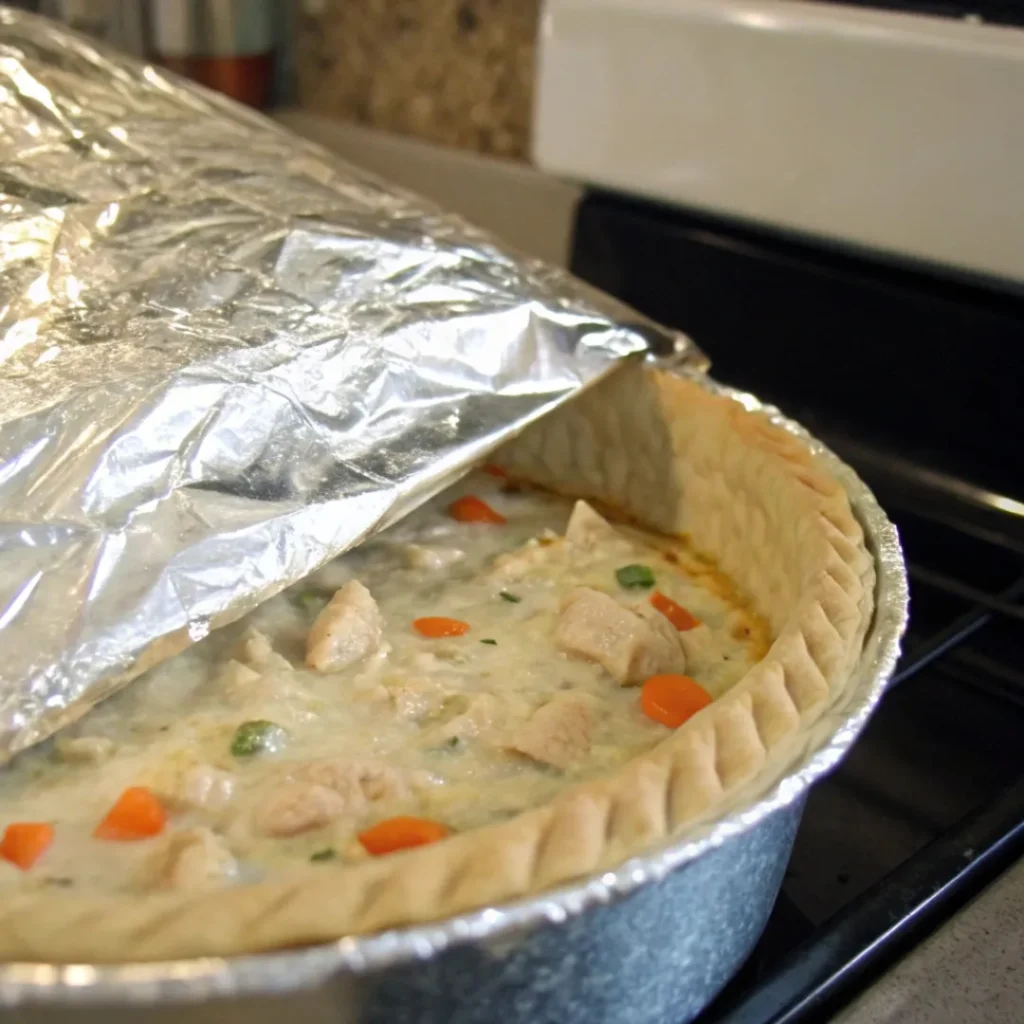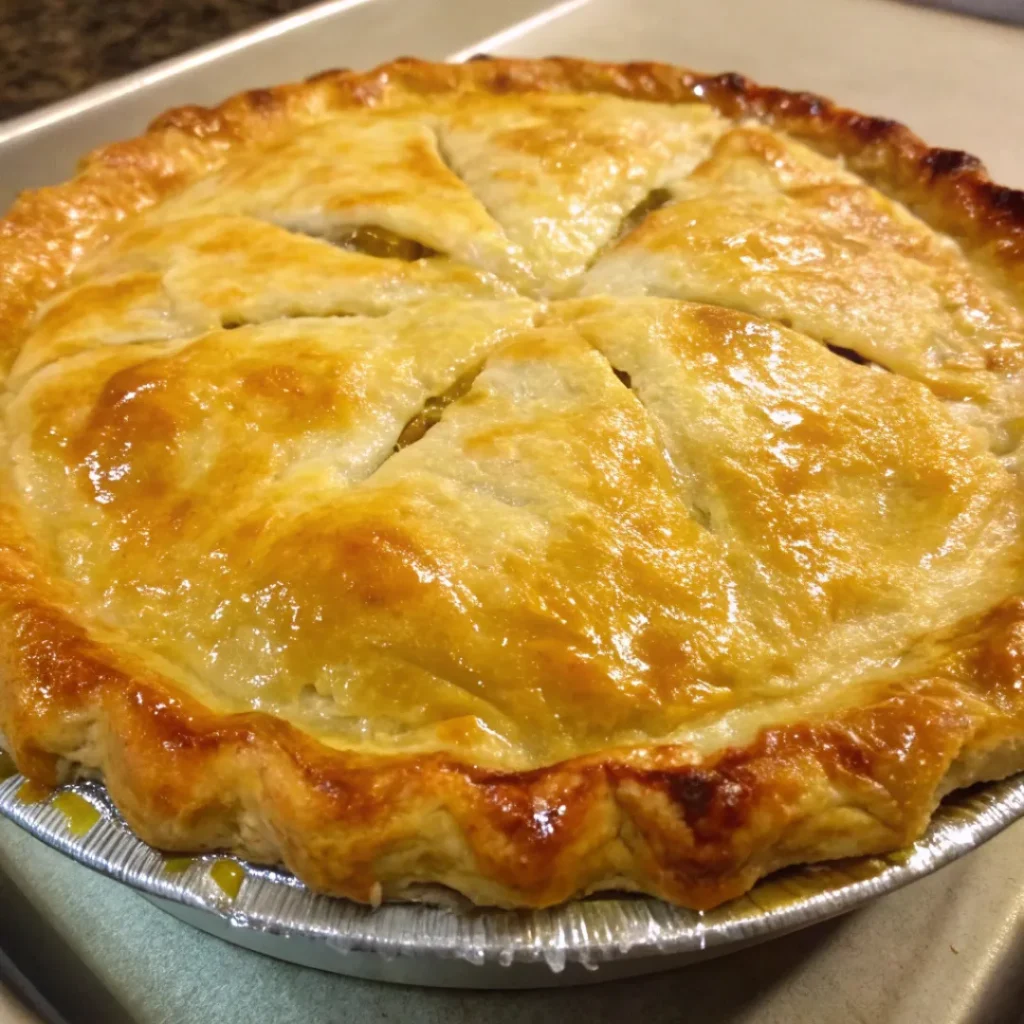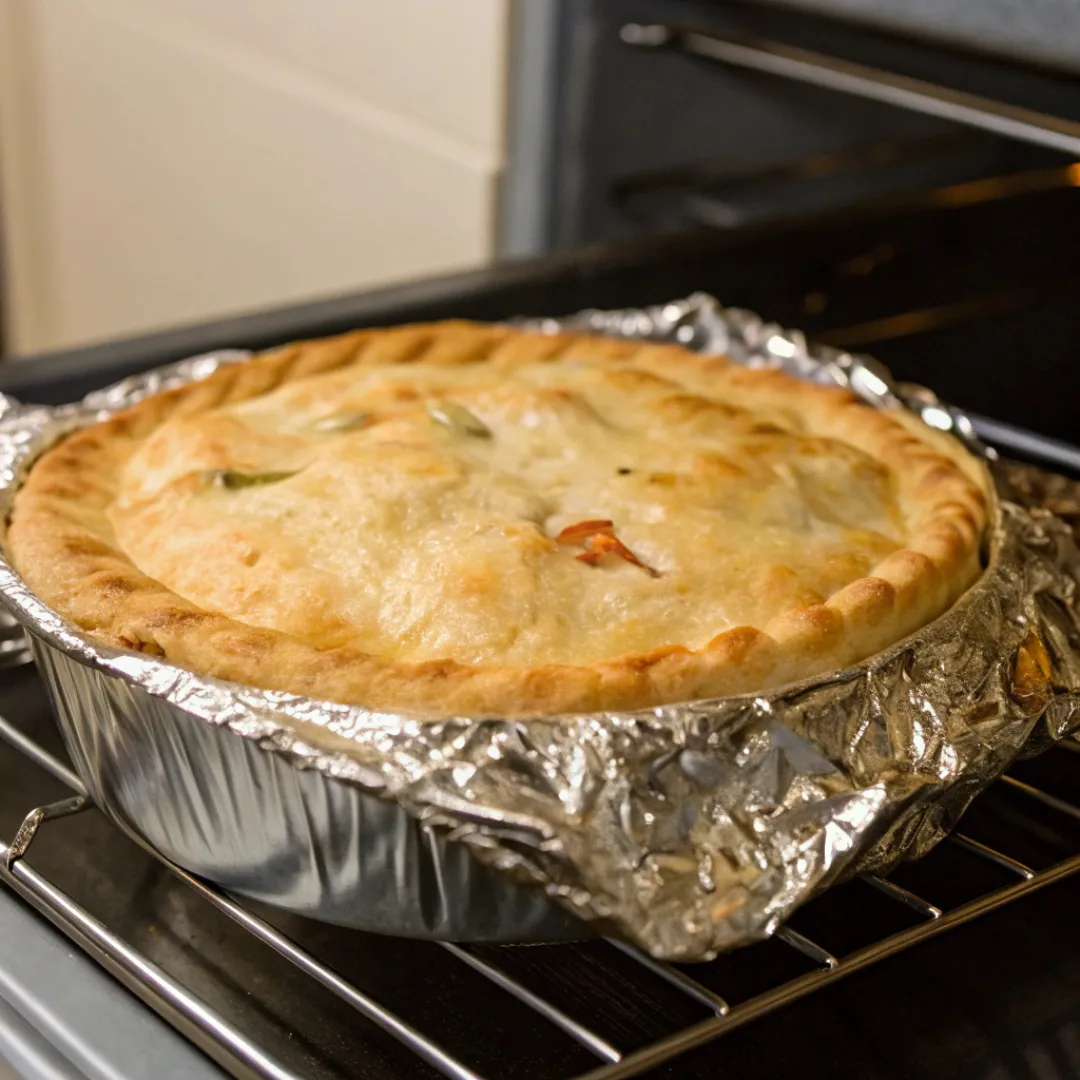Chicken pot pie is the ultimate comfort food—creamy filling, tender vegetables, and a golden, flaky crust all baked into one hearty dish. But when it comes to getting that crust just right, many home bakers face the same challenge: keeping the top from burning while ensuring the inside is fully cooked. This leads to a common question—should I cover chicken pot pie with foil? In this article, we’ll explore when and why you might want to use foil while baking, how it affects the texture and doneness of your pie, and tips to help you get the perfect balance of crisp crust and creamy filling every time.
Why Covering Chicken Pot Pie With Foil Matters
Covering a chicken pot pie with foil can have several benefits that influence the outcome of the dish. While the main purpose of foil is often to prevent over-browning, it can also help with even cooking and moisture retention. Let’s take a closer look at the primary reasons why covering chicken pot pie with foil is worth considering:
Preventing Over-Browning
Chicken pot pie requires a relatively long baking time to ensure the filling heats through and the crust becomes flaky and golden. However, if the pie is left uncovered for the entire duration, the crust can sometimes brown too quickly, especially around the edges. Covering the pie with foil helps protect the crust from becoming overly dark or burnt, keeping it golden and appetizing.
Promoting Even Cooking
Covering the pie with foil allows the heat to distribute more evenly across the top, edges, and filling. This helps ensure that the filling cooks through without drying out the crust.
Retaining Moisture in the Filling
The foil traps steam inside the pie, which keeps the filling moist and prevents it from drying out. This is particularly important for a creamy filling, as moisture loss can make the filling thick, pasty, or dry.
Learn about foil baking techniques and their benefits for a perfectly baked pie crust every time.
When Should You Cover Chicken Pot Pie With Foil?
Deciding when to cover your chicken pot pie with foil depends on a few factors, including the baking time, oven temperature, and your crust preference. Here are some situations where covering with foil is beneficial:
Beginning of the Baking Process
If you know your oven tends to run hot or the crust browns quickly, cover the pie with foil from the beginning of the baking process. This will help protect the crust until the filling is thoroughly heated.
Midway Through Baking
For a balanced approach, many cooks prefer to cover the pie halfway through the baking time. This allows the crust to develop some initial color before the foil prevents further browning. As a general guideline, bake the pie uncovered for 15–20 minutes, then cover it with foil for the remaining time.
When the Crust Begins to Brown
If you’re baking the pie uncovered and notice that the crust is browning too quickly, cover it with foil for the rest of the baking process. This way, you can stop the browning without interrupting the cooking.
Near the End of Baking (For Crisping)
In some cases, you may start the pie covered to heat the filling thoroughly and uncover it for the last 10–15 minutes of baking. This method ensures the filling is hot and prevents excess browning, while the uncovered final minutes add crispness to the crust.
How to Properly Cover Chicken Pot Pie With Foil
Using foil correctly is key to getting the results you want. Here’s a step-by-step guide for properly covering your chicken pot pie with foil:

Choose the Right Foil Size
Tear a piece of foil large enough to cover the entire surface of the pie, including the edges. If needed, you can use multiple pieces of foil to cover the pie completely.
Create a Tent with the Foil
To avoid compressing the crust, tent the foil loosely over the pie. This allows heat and steam to circulate without pressing down on the crust, which helps keep it light and flaky.
Crimp the Edges
If the edges of the crust tend to brown faster than the rest of the pie, you can crimp foil around the outer edge. This focuses protection on the crust’s most vulnerable parts, while allowing the center to bake freely.
When to Remove the Foil
If you are covering the pie from the start or midway through, remember to remove the foil 10–15 minutes before baking time is up. This ensures the pie finishes with a crisp, golden crust.
Baking Temperature and Time for Chicken Pot Pie
Finding the right temperature and baking time is essential for a perfectly cooked chicken pot pie. Here are some general guidelines:
Temperature Guidelines
A standard baking temperature for chicken pot pie is around 375°F (190°C). This moderate heat allows the crust to bake evenly without becoming too dark.
Baking Time
The average baking time for a homemade chicken pot pie is 45–60 minutes. If you are using a pre-cooked filling, the time may be closer to 45 minutes. For a completely raw filling, it may take closer to an hour or even 75 minutes.
Adjusting for Frozen Pot Pie
If you are baking a frozen chicken pot pie, add approximately 20 minutes to the baking time, and consider covering with foil from the beginning to prevent excessive browning.
Troubleshooting Common Chicken Pot Pie Baking Issues
Despite best efforts, there may still be some challenges when baking chicken pot pie. Here are solutions to some common problems:
Soggy Bottom Crust
To prevent a soggy bottom crust, consider pre-baking the crust for 10 minutes before adding the filling. You can also sprinkle a thin layer of breadcrumbs over the bottom before adding the filling to absorb excess moisture.
Dry Filling
If the filling is dry, it may need more liquid. To keep it moist, add a bit of chicken broth or cream to the filling before baking. Covering the pie with foil also helps retain moisture.
Crust Browning Unevenly
If the crust is browning unevenly, rotate the pie halfway through baking. If necessary, cover the darker areas with foil to prevent further browning.
Achieving the Perfect Crust Without Over-Browning
A golden, flaky crust is the hallmark of a delicious chicken pot pie. Here are a few techniques for achieving that perfect crust without over-browning:
Use an Egg Wash
Brushing the crust with an egg wash before baking adds a beautiful golden color. Whisk an egg with a little milk or water and brush it onto the crust for a glossy, golden finish.
Cover the Edges Only
To achieve even browning, cover just the edges of the pie with foil, leaving the center uncovered. This allows the entire pie to bake without risking overly dark edges.
Consider Baking on a Lower Rack
Baking on a lower rack can help the bottom crust bake evenly and prevent the top crust from over-browning.

Frequently Asked Questions
Should I Cover Chicken Pot Pie with Foil?
Yes, covering chicken pot pie with foil at certain points during baking helps prevent the crust from over-browning and keeps the filling moist.
When Should I Remove the Foil?
For the best results, remove the foil during the last 10–15 minutes of baking to allow the crust to brown and become crispy.
Can I Bake Chicken Pot Pie Without Foil?
You can, but keep an eye on the crust to prevent it from over-browning. Consider covering the edges if they darken too quickly.
Do I Need to Cover a Frozen Chicken Pot Pie?
Yes, covering a frozen pot pie with foil for the first part of baking can help it heat evenly without burning the crust.
What Temperature Should I Bake Chicken Pot Pie At?
A moderate temperature of 375°F (190°C) works well for chicken pot pie, balancing even cooking with crust browning.
Conclusion
Covering chicken pot pie with foil is an effective technique that helps balance even cooking, prevents over-browning, and retains moisture in the filling. Whether you cover the pie for the entire baking process or only part of it, using foil properly can enhance the final result and make the pie even more enjoyable. With the right approach to covering, venting, and baking, you’ll achieve a golden, flaky crust and a warm, creamy filling every time. Next time you prepare chicken pot pie, consider these tips to get the perfect crust and deliciously tender filling!

